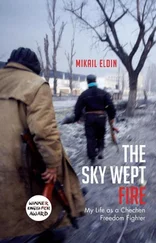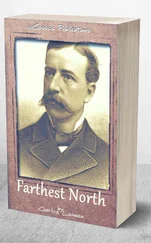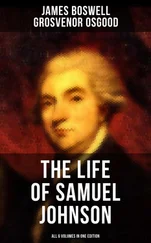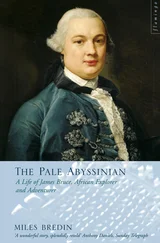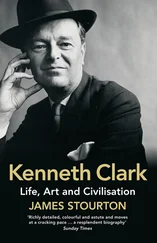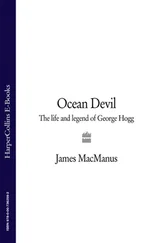Sixteen hours after they had been stopped by the police, Carter and Artis were released from the police station. Carter was given his car keys and went to the police garage, only to find that the car’s paneling, dashboard, and seats had been ripped out. The following day, June 18, Assistant County Prosecutor Vincent E. Hull told the Paterson Morning Call that Carter had never been a suspect. Eleven days later Carter, as well as Artis, testified before a Passaic County grand jury about the Lafayette bar murders. DeSimone testified that both men passed their lie detector tests and that neither man fit the description of the gunmen. Notwithstanding the adage that a prosecutor can indict a ham sandwich—prosecutors are given a wide berth to introduce evidence to show probable cause—the prosecutor in the Lafayette bar murders failed to indict anyone. Carter traveled to Argentina and lost his fight against Rocky Rivero. The promoter never did give him a sparring partner. The thought flashed through Carter’s head that he should just stay in Argentina, which had no extradition treaty with the United States. That way, the Paterson police would no longer be able to hassle him. Instead he returned home.
On October 14, 1966, Carter was picked up by the police and charged with the Lafayette bar murders.
* FBI files released through the Freedom of Information Act indicate that Carter was under investigation at least by 1967. The report could not be read in full because the FBI had blacked out many sections, evidently to protect its informants.
* The Miranda decision had been issued only days before the Lafayette bar murders. DeSimone testified that he gave Carter his Miranda warning, which Carter denies.
IT WAS THE BREAK everyone had been waiting for. On October 14, 1966, the front page of the Paterson Evening News screamed the headline: “Mystery Witness in Triple Slaying Under Heavy Guard.” A three-column photograph, titled “Early Morning Sentinels,” showed tense police officers in front of the Alexander Hamilton Hotel on Church Street guarding the “mystery witness.” An unnamed hotel employee said he saw the police hustle a “short man” into an elevator the day before at 6 P.M. The elevator stopped on the fifth floor, where a red-haired woman was seen peering out from behind a raised shade.
The newspaper story raised as many questions as it answered, but the high drama indicated that a breakthrough had occurred in the notorious Lafayette bar murders, now four months old. Excitement swirled around the Hamilton, where a patrol car was parked in front with two officers inside, shotguns at the ready. Roaming behind the hotel were seven more officers, guarding the rear entrance. A police spotlight held a bright beam on an adjoining building’s fire escape, lest an intruder use it to gain access to the Hamilton. Two more shotguntoting cops stood inside the rear entrance, and detectives roamed the lobby. Overseeing the security measures, according to the newspaper, was Mayor Frank Graves.
John Artis saw the headline and thought nothing of it. He assumed he had been cleared of any suspicion of the Lafayette bar shooting after he testified before the grand jury in June and no indictments had been issued. At the time, Artis was at a crossroads in his own life. His mother had died from a kidney ailment a month after he graduated from Central High School in 1964. Mary Eleanor Artis was only forty-four years old, and her death had devastated John, an only child. He knocked around Paterson for several years, working as a truck driver and living with his father on Tyler Street. In high school, he had been a solid student and a star in two sports, track and football, and he sang in the choir at the New Christian Missionary Baptist Church. He had giddy dreams of playing wide receiver for the New York Titans (later known as the New York Jets). He also had a bad habit of driving fast and reckless—he banged up no fewer than eight cars—but he had no criminal record and never had any problems with the police. Neither of his parents had gone to college, and they desperately wanted their only child to go. By the fall of 1966, Artis had been notified by the Army that he had been drafted to serve in Vietnam, but he was trying to avoid service by winning a track scholarship to Adams State College in Alamosa, Colorado, where his high school track coach had connections.
On October 14, dusk had settled by the time Artis finished work. It was Friday, the night before his twentieth birthday, and an evening of dancing and partying lay ahead. He stopped at a dry cleaner’s to pick up some shirts, then went into Laramie’s liquor store on Tyler Street to buy an orange soda and a bag of chips. He and his father lived above the store. As he was paying for the soda, the door of the liquor store swung open. “Freeze, Artis!” a cop yelled. “You’re under arrest!”
Artis saw two shotguns and a handgun pointed at him. “For what?” he demanded.
“For the Lafayette bar murders!”
“Get outta here!”
Police bullying of blacks in Paterson was so common that Artis thought this was more of the same, an ugly prank. But then two officers began patting him down around his stomach and back pockets. Artis handed his clean shirts to the liquor store clerk and told him to take them to his father. His wrists were then cuffed behind his back. Damn , Artis thought, these guys are serious! On his way out of Laramie’s, Artis yelled his father’s name: “JOHHHHN ARTIS!” As he was shoved into a police car, Artis saw his father’s stricken face appear in the second-story window.
Rubin Carter was at Club LaPetite when one of Artis’s girlfriends approached him with the news: John had been arrested.
“For what?” Carter asked.
“I don’t know, they just arrested him.”
Like Artis, Carter had seen the “Mystery Witness” headline in the newspaper but hadn’t given it a second thought, and he didn’t connect the headline to Artis’s arrest. Carter, distrustful of the police, feared for Artis’s safety, so he got into his Eldorado and drove to police headquarters to check up on the young man. As he neared the station, he put his foot on the brake; then, out of nowhere, detectives on foot and in unmarked cars swarmed around his car.
“Don’t move! Put your hands on the wheel! Don’t move!”
Here we go again , was all Carter could think. But this police encounter proved to be much more harrowing than his June confrontation. His hands were quickly cuffed behind his back, and he was shoved into the back seat of an unmarked detective’s car. According to Carter, the officers did not tell him why they had stopped him or what he was being charged with. Instead, with detectives on either side of him, the car doors slammed shut and the vehicle sped away, followed by several other unmarked cars. Carter had no idea where they were going, or why. Soon the caravan headed up Garrett Mountain, cruising past the evergreens and maple trees. Even at night Carter knew the winding roads because he often rode his horse on the mountain. The motorcade finally came to a stop along a dark road, and there they sat. Detectives holding their shotguns milled around, and Carter heard the crackling of the car radios and officers speaking in code. They did not ask him any questions. Damn! They’re going to kill me . They sat for at least an hour, then Carter heard on the car radio: “Okay, bring him in.” He always assumed that someone had talked the detectives out of shooting him.
At headquarters, Carter was met by Lieutenant DeSimone and by Assistant County Prosecutor Vincent E. Hull. It was Hull who spoke: “We are arresting you for the murders of the Lafayette bar shooting. You have the right to remain silent …” The time was 2:45 A.M. Unknown to Carter, Artis had also been taken to Garrett Mountain, held for more than an hour, then returned to headquarters and arrested for the murders. The Evening News said the arrests “capped a cloak-and-dagger maneuver masterminded by Mayor Graves,” who grandly praised his police department: “Our young, aggressive, hard-working department brought [the case] to its present conclusion.”
Читать дальше

